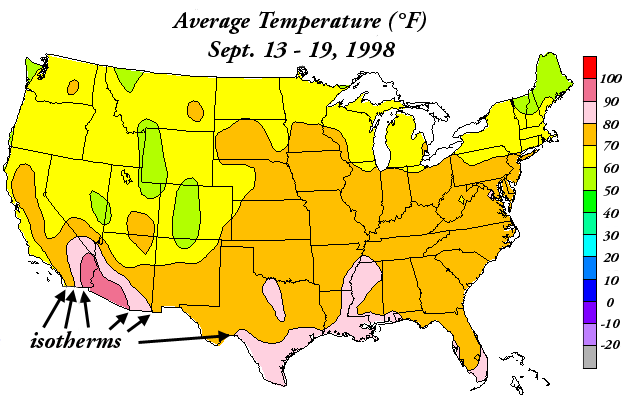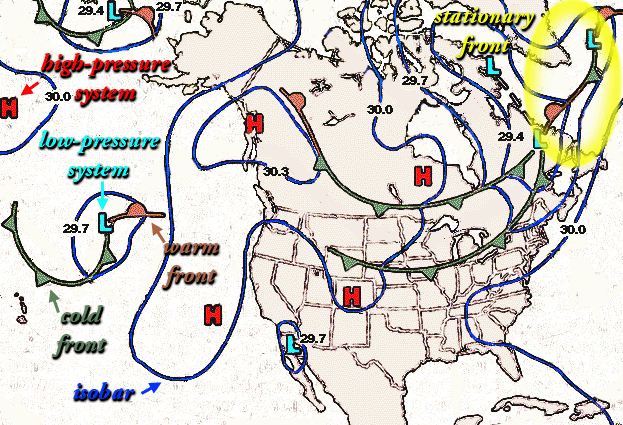| |
|
|
Activity
- Reproduce or print the black-and-white continental
map. Distribute to each student.
- First, label the states on the map.
- Challenge students with good knowledge of United States geography
to locate the regions known as the gulf states, Northern Plains,
Rockies, California deserts.
- Discuss how isotherms and isobars are used to show lines of
constant readings. The sample temperature map
and sample weather map can be used for
this purpose.
- Using the sample weather map, introduce
new weather symbols used to show cold fronts, warm fronts, stationary
fronts, high-pressure, and low-pressure systems.
- Create scenarios for the students to symbolize on the map.
- Propose a number of weather conditions, including:
- a warm front moving from Texas to gulf states
- a cold front moving from Canada to the Northern Plains
- warm temperatures into the 90s (indicated by an isotherm)
from California deserts to southern Arizona
- temperatures into the 80s (indicated by isotherms) from
Los Angeles to San Francisco, into central Nevada, Arizona,
Albuquerque and western Texas
- temperatures into the 70s (indicated by an isotherm) from
northern California to Oregon, central Idaho, Utah, Colorado,
Missouri and north to Wisconsin.
|
|
| |
Assessment Ideas
- Have students create a series of weather maps in their science
journals. The maps may be from new papers or other sources. Have
the students label the maps with the weather conditions in particular
cities and locations. Now pass out unlabeled satellite maps and
have students label the main characteristics that they can identify.
Create an overhead of either a labeled weather map or the satellite
map. What correlation can be seen?
|
|
|
|


